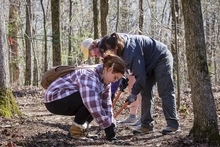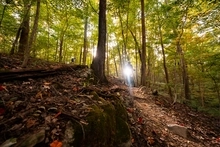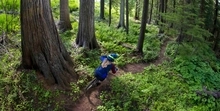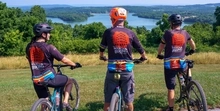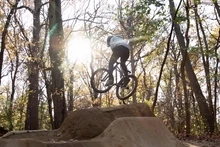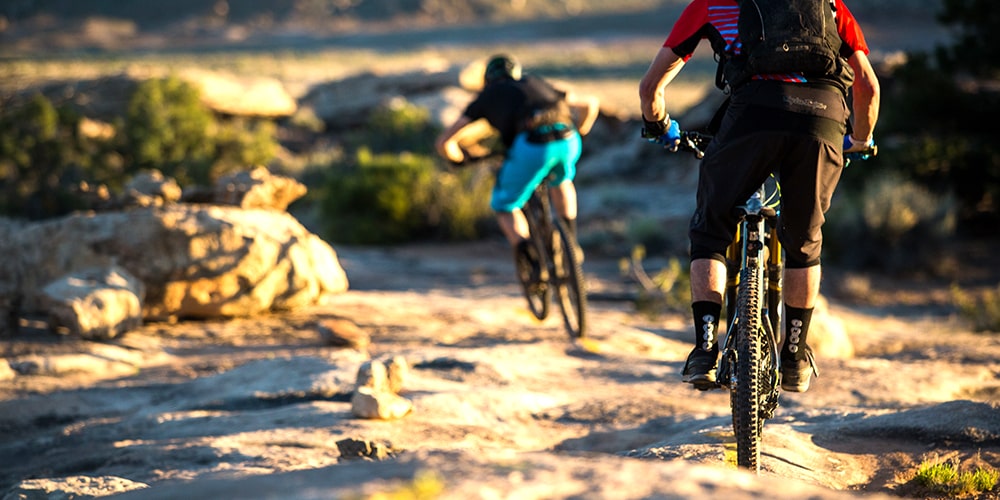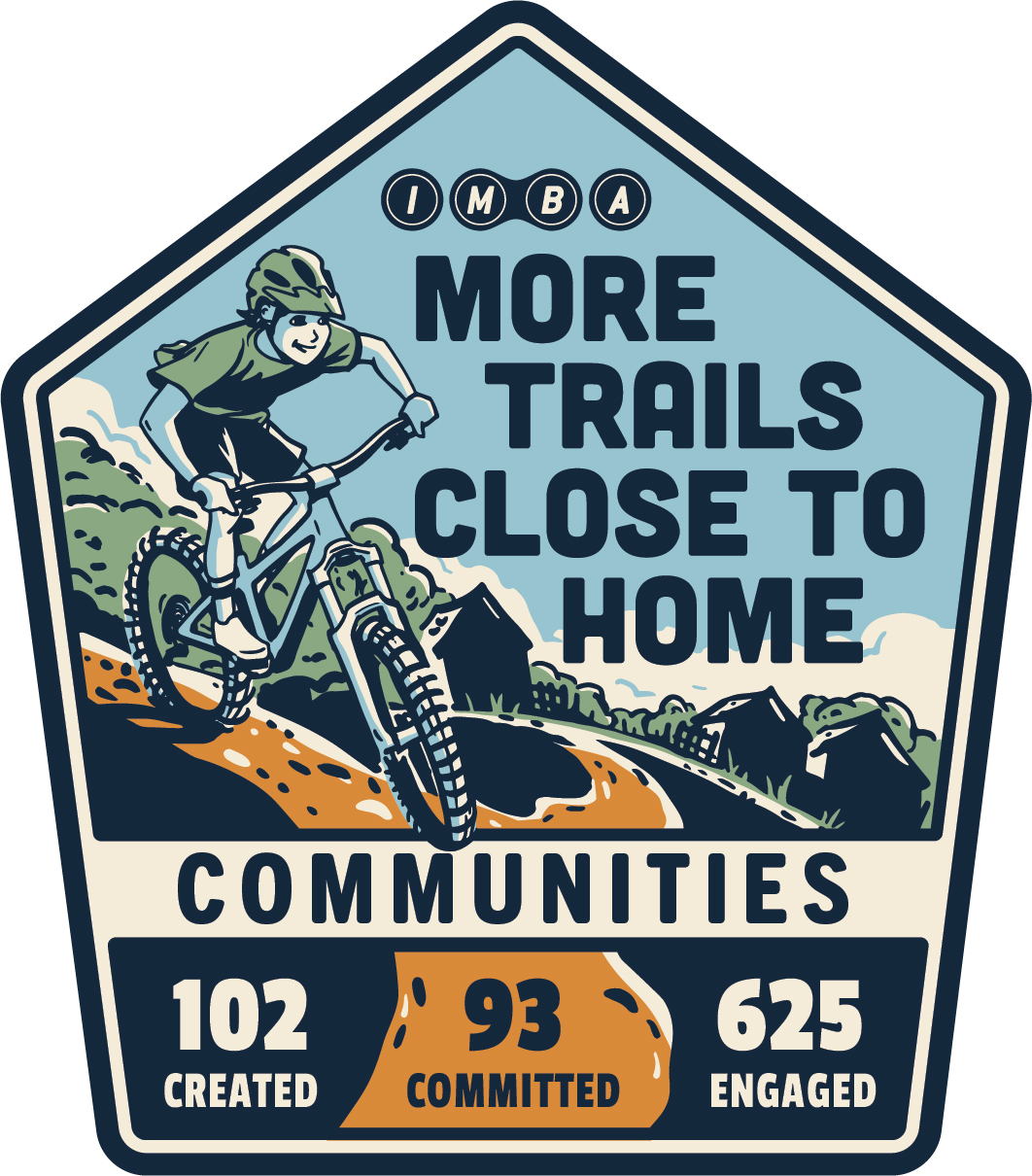Green Trails, Greenways, and an Ecosystem of Trails
Part two of a three-part series on amplifying the collective voices of mountain bikers to influence policy.
Read Part 1 here.
I love it when a plan comes together!
The Santa Fe National Forest has a newly approved land management plan as of July 2022. While this may not sound like cause for celebration, for the Santa Fe Fat Tire Society this is the successful end to a journey that started in the first public meeting eight years ago.
Forest management plans are a big deal! These plans establish standards and guidelines such as where trails can be built and what types of activities are allowed. National Forest plan revisions should happen every 15 years or so. It's long process, but participating in the revision process can bring enormous benefits for mountain biking and outdoor recreation in your community.
What's in a forest plan?
A guide to National Forest planning
Advocacy is hard work
For mountain bikers living in the western United States, National Forests are preferred landscapes for mountain biking and trail building. National forests hold that wooded singletrack that we treasure for after-work rides and multi-day bikepacking epics. We work hard to climb steep trails and hand-cut singletrack in the forest. We've put in many days in the forest over the years and feel a sense of personal ownership of our public lands.
Contributing to a new forest plan is also hard work but it feels very different from trail building. This is the hard work of attending meetings, watching PowerPoint slideshows, reviewing hundreds of documents, and speaking publicly about how you value the forest.

Assemble your team
The first step in the forest plan revision process will be to engage your local mountain biking community. Reach out to your current and past membership, local shops, friends and anyone you know who bikes. Make sure your email list is current and communicate clearly with your mountain biking community. Recruit a core advocacy team who can stay engaged in the process. Your team members may be a different group from ride leaders and trail builders, but their contribution will be just as valuable.
Good advocates often have experience with government processes as well as knowledge of trails and the forest. Be clear with your team that you are asking them to start what will be a lengthy process. Determine how you will communicate, set up those channels, and keep information flowing between team members.
Show up in meetings
Forest Plan revisions involve a lot of meetings. So. Many. Meetings.
Public outreach and input are a requirement of the forest plan revision process and you should expect to attend as many of the public meetings as possible. Regularly communicate meeting dates and times so that members of the advocacy team and your club are present in every meeting. Having a flexible schedule can be important as meetings will be scheduled during regular work hours. And remember to bring your friends when you attend the meetings! There is strength in numbers. During introductions, announce that you are a mountain biker and a member of the local club. Your club's presence at these meetings will demonstrate commitment to forest service staff and other user groups.
Provide useful comments
The meetings will provide opportunities to offer your comments on parts of the management plan. Submit comments as a club and individually. Submitting written comments will give you and your club "standing" later in the process to object to any parts of the management plan that could conflict with mountain biking and other sustainable, recreational uses. Make comments that are well-reasoned, realistic and address the management concerns of the Forest Service. Your advocacy team should track progress of the plan revision, upcoming deadlines and comments submitted.
Make new friends
Many other people will get involved in the forest plan revision. From loggers and ranchers to environmentalists, motorized users, equestrians, hikers and other mountain bikers you haven't met. Talk to them and find common ground with other user groups. While you won't see eye to eye with everyone, you can find points of agreement and help clear up mistaken assumptions about mountain bikers. Look for people who use trails and that can lead to more conversation and better understanding between groups. Take notes as important information can come from conversation with other users and staff members. Remember that people love trails and you will find allies.
Be positive and persistent
A forest plan revision is a protracted process and can become mentally and emotionally tiring. When you get frustrated, go ride your bike and relax with your friends. Go out into the forest to clear your mind and remember why you love public lands. Don't direct your aggravation to other user groups or the forest service staff, you will need to work with them throughout the process.
Keep your eyes on the prize
Our goal was a national forest land management plan that welcomes mountain bikers and supports building sustainable trails. So, how did the forest plan turn out? The results are: no net loss of existing trails, no loss of mountain bike access to areas where trails are planned, non-motorized trail development is now allowed in Inventoried Roadless Areas, the national forest will work to partner with user groups and simplify the process for trail project approval.
We also improved the club's relationship with national forest staff which has already helped move new trail projects forward. Thanks to that relationship the Santa Fe Fat Tire Society is now building the first phase of a new trail network east of Santa Fe. This will add 20 miles of trails that connect existing trails to create a much larger network in the Santa Fe National Forest.
Forest plans last a long time
I can't say that our club got everything we wanted. But, the forest plan reflects a majority of our input and comments. In short, the new plan is a marked improvement over the old 1987 management plan and we are working on more trail projects than we imagined eight years ago. Today the Santa Fe Fat Tire Society can take a moment to toast a very successful step forward in building our mountain biking community one trail at a time.



